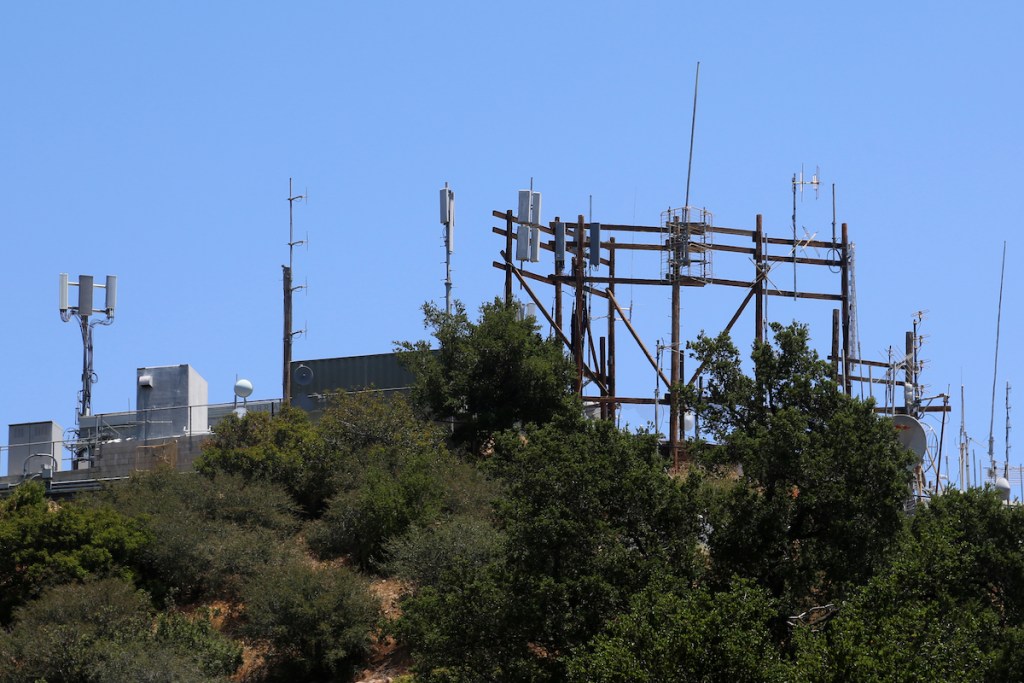Changes in Earth’s atmosphere have been interfering with the airwaves, making a recent victim out of a public radio broadcast in Santa Barbara.
After 39 years of programming in the city of Santa Barbara, the San Luis Obispo-based KCBX public radio station broadcast on 89.5 FM, KSBX, has been taken off the air. The culprit? An atmospheric phenomenon known as “ducting.”
According to Libe Washburn, an oceanographer in the Marine Science Institute at UC Santa Barbara, atmosphere ducts are regions in the atmosphere near the Earth’s surface that allow radio waves to be received from distant transmitters.
The ducts are caused by changes in the lower atmosphere, and can affect how radio signals propagate over land and bodies of water. Ducting, in turn, influences how strong a radio signal is and how far it travels.
In a letter to listeners on December 15, KCBX president Frank Lanzone explained that ducting allows “broadcasts on a frequency many miles away to reach new coastlines and interfere with that same frequency locally.”
KCBX was losing the fight for the right to frequency against KPBS in San Diego, a radio station 200 miles away using the same frequency as KCBX’s broadcast on 89.5 FM in Santa Barbara.
“You most likely experienced the battle between our two stations vying for control over the same frequency,” Lanzone said in his letter to listeners. “One day, you’re listening to KCBX, the next day it’s KPBS. To be clear, this is not a problem that KPBS can fix, and it is not an intentional effort by them to break into the Santa Barbara radio market.”
Washburn explained that FM radio signals are normally transmitted in straight lines, limited by “line-of-sight,” or direct lines of transmission, for radio reception.
“They do not curve with the Earth’s surface as they propagate,” he continued. “Atmospheric ducts cause FM radio signals to bend downward toward the Earth’s surface, and so they can travel along the curvature of the Earth’s surface.”
This process, in which radio waves bend downward in the warm duct and travel more slowly than they would in the cold air above, is called refraction.
“For example, refraction can be seen in ocean waves as they approach a reef break,” Washburn said. “The waves bend toward the reef where they travel more slowly due to shallowing water depths.”
In atmosphere ducts, “radio signals first bend downward and then turn back upward as they reflect off the Earth’s surface,” Washburn said. “This process repeats over and over so that the signals follow the Earth’s surface and can be received over long distances.”
In his message to listeners, Lanzone attributed the issue to climate change, which is a suspect that should not be entirely ruled out in the case of signal interference. However, Washburn noted that it cannot be said for certain whether global warming is linked to increased atmospheric ducting of radio waves.
Sign up for Indy Today to receive fresh news from Independent.com, in your inbox, every morning.
Leila Carvalho, a professor in the Department of Geography at UCSB, said multiple studies have shown that differences in ocean and air temperatures — air temperatures being warmer than ocean temperatures — as well as more humidity above the surface and light winds, may create ducts and make radio signals stronger.
“Since there is a combination of factors involved, knowing which one is dominating, or whether and how climate change will modify these ducts, is something beyond the scope of my research,” Carvalho said.
Carvalho noted, though, that the same atmospheric variables can also influence cell phone communication, especially in Santa Barbara, where there are so few cell towers serving the county. Residents, therefore, may be able to direct the blame for bad reception toward the sky.
“Have you noticed how often your cell phone gets very poor signal sometimes?” Carvalho said. “I do have this problem in my house.”
In an email to the Independent, Lanzone said that atmospheric ducting does not lead to the end of radio broadcasts very often.
“It takes just the right physical conditions to cause it, so it’s not happening to lots of stations in the same area, but it happens to a few stations around the country,” he said. “We’ve been working on this problem for many years. It’s not a recent issue that we recently became aware of. It’s something that engineers know about, so our engineer figured it out way back when.”
In terms of Santa Barbara listeners keeping up with KCBX broadcasting, the letter states that KCBX has “no plans to reduce or limit news reporting and other coverage of the Santa Barbara area.” Lanzone said many listeners have already turned to streaming their broadcasts online.
“So we’re hopeful that most [listeners] will stay with us,” Lanzone said. “We’ve tried various ways to solve this … the move away from broadcast to streaming and digital listening has been happening to all radio stations, as habits change.”
For those who still prefer analog listening, on the outskirts of Santa Barbara, including most of the city of Goleta, KCBX can still be heard on their 90.9 FM signal.
Support the Santa Barbara Independent through a long-term or a single contribution.

